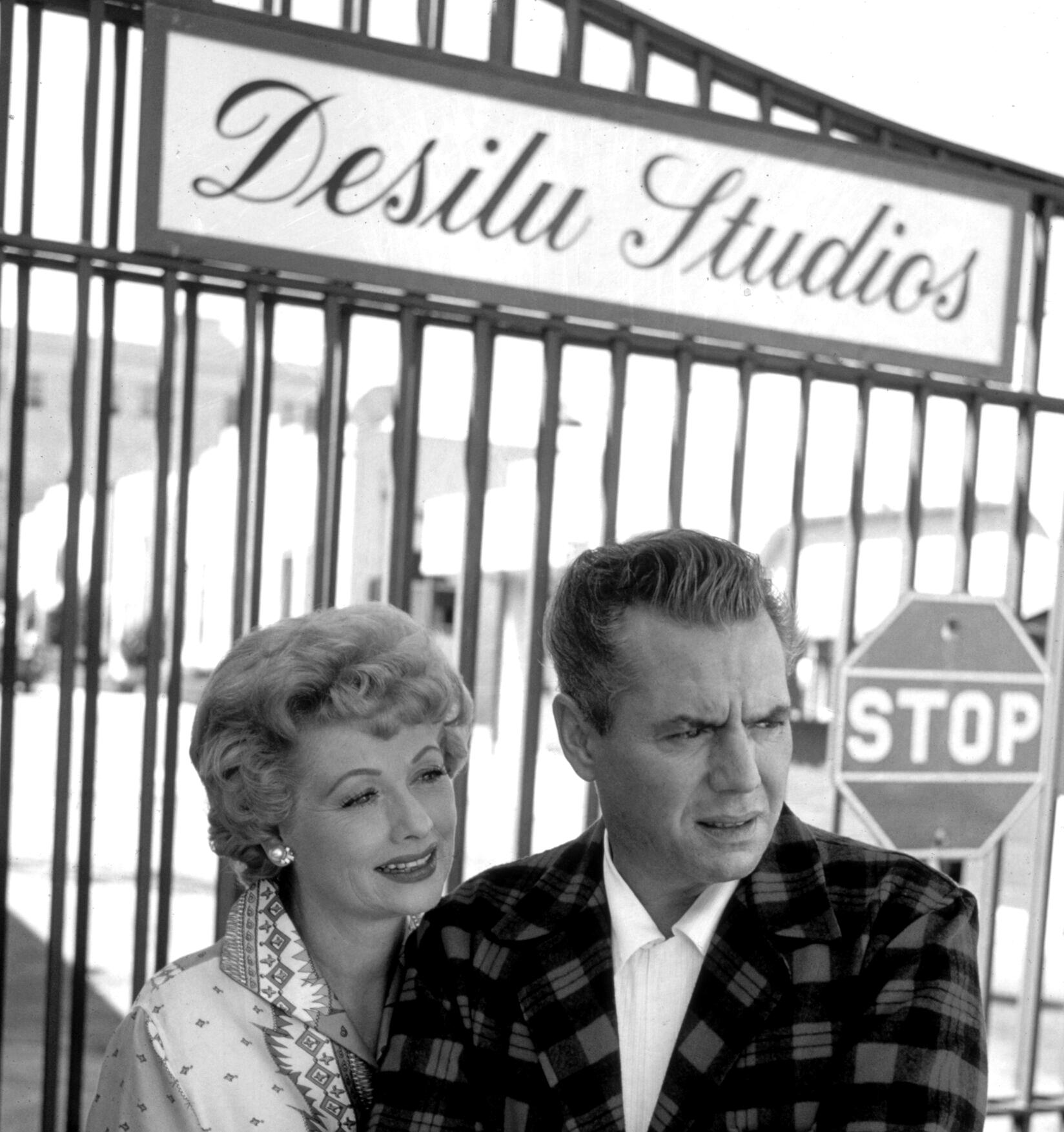20 I Love Lucy Fast Facts
#1
Lucille Ball agreed to star in I Love Lucy only if her real-life husband was cast in the co-starring role. Network executives and sponsors, reflecting xenophobic attitudes of the 1950s, hesitated to showcase an intermarriage on television. As Lucy remembered: They “said the public wouldn’t believe I was married to Desi.” Lucille Ball held her ground and ultimately proved that the American public not only accepted Desi Arnaz but venerated him as one of the most influential artists of the era, and of the 20th century.

#2
Lucille Ball was the first woman to appear pregnant on one of the three major television networks. Desilu Studios consulted with network censors and leaders from different religious organizations to determine that Lucy Ricardo would be described as “expecting” rather than “pregnant.”

#3
William Frawley was a devout baseball fan and had it written into his contract that he did not have to work when the Yankees were in the World Series—which they were in 1951, 1952, 1953, 1956, and 1958. The Fred Mertz character was written out of two episodes because of this contractual clause.

#4
Lucy and Ricky Ricardo’s fictional phone number was Murray Hill 5-9975. The New York Bell Telephone Company designated this un-used number specifically for the show.

#5
The I Love Lucy Christmas episode was one of the first holiday specials in television history. It was removed from regular rerun syndication for decades. In 2013, 8.7 million viewers tuned in when CBS aired a colorized version of the episode during the holiday season.

#6
Lucille Ball and Desi Arnaz were the television industry’s first millionaires.

#7
Most television shows in the early 1950s were shot live in New York City. I Love Lucy was among the very first shows to film in Los Angeles, contributing to a trend that established Hollywood as the capital of broadcasting in the United States.

#8
Lucille Ball’s mother, DeDe, attended every single taping of I Love Lucy and her distinctive laughter can be heard clearly on the show’s soundtrack.

#9
The pilot episode of I Love Lucy was shot on March 2, 1951, which was Desi Arnaz’s 34th birthday. The episode was considered “lost” for nearly 40 years until an original 35mm print was discovered in the home of Pepito Perez, one of Desi Arnaz’s closest creative collaborators. The first few seconds of the film were damaged beyond repair, but the rest of the show was aired in a special CBS tribute on April 30, 1990, hosted by Lucie Arnaz.

#10
I Love Lucy’s credit sequences originally featured cartoon versions of Lucy and Ricky Ricardo that were created by the Hanna–Barbera animation studio. These credits were replaced by the more familiar satin heart logo in syndication.

#11
In 1952, I Love Lucy became the very first sitcom to reach #1 in the Nielsen ratings, where it stayed for four of its six seasons.

#12
I Love Lucy was adapted for television from the popular radio comedy My Favorite Husband, which featured Lucille Ball opposite Richard Denning. The radio show was written by Jess Oppenheimer, Madelyn Pugh, and Bob Carroll Jr., who all went on to write for I Love Lucy.

#13
“Lucy Goes to the Hospital,” an episode featuring the birth of Little Ricky, was viewed by 44 million people—15 million more viewers than would tune in to see President Eisenhower’s inauguration the next day. With 71.7% of American households tuned in, it remains one of the most-viewed broadcasts in TV history.

#14
Lucille Ball’s personal favorite episode of I Love Lucy was “Lucy’s Italian Movie,” during which she hilariously stomps grapes at a winery in Italy.

#15
The original I Love Lucy concept was about a successful orchestra leader and his movie star wife. Lucille Ball, Desi Arnaz, and their writers ultimately decided it was more interesting – and more relatable – if the characters were not portrayed as wealthy and famous.

#16
Every episode of I Love Lucy was shot in front of a live audience of 300 ticketed viewers, often tourists visiting Hollywood from around the country. Before each taping, Desi Arnaz acted as emcee, introducing the cast to the audience and warming the crowd up for the show.

#17
Although network executives refused the expense of shooting a television series on high-quality film, Arnaz and Ball insisted. They offered to pick up the tab for the extra expense under the condition that they would retain ownership of the films. That negotiation is widely considered one of the smartest business decisions in the history of American entertainment, as Desilu Studios went on to invent the concept of the “rerun” and use profits from the I Love Lucy show syndication to fund the growth of the studio.

#18
I Love Lucy was pioneering for its use of multiple, simultaneously filming cameras and a live studio audience. It was also one of the first TV shows to be shot on 35mm film, rather than broadcast live.

#19
Lucille Ball considered I Love Lucy to be a form of “exaggerated satire.” As she explained, “We start with a normal premise; then take our characters beyond that.” Though the Lucy Ricardo character often finds herself in situations that seem to be “farfetched,” they are always rooted in motivations that are “very logical.”

#20
During Lucy Ricardo’s on-screen pregnancy, hundreds of thousands of women from around the country wrote to Lucille Ball. As she remembered, “After our baby was born, I received thirty thousand congratulatory telegrams and letters.”
